Bremerton-Seattle route chosen as design route for fully electric fast ferry
In late January, we announced some big news: Kitsap Transit’s Bremerton-Seattle route has been selected as the design route for a fully electric passenger-only ferry.
Exciting, right? But what exactly does that mean?
In simple terms, it means that this conceptual zero-emission ferry will be designed to travel roundtrip between Bremerton and Seattle on a single battery charge. Public demand on the Bremerton-Seattle route is solid – it has the highest ridership of Kitsap Transit’s three fast-ferry routes – because current ferries sprint through the wake-sensitive Rich Passage and across the Puget Sound in 30 minutes.
“If we can virtually eliminate our fast ferries’ fossil-fuel emissions and their wake with an all-electric fast foil ferry, that’s a game-changer for marine transportation in the Puget Sound and progress toward a climate-friendly economy,” said John Clauson, Executive Director of Kitsap Transit.
Background
Let’s back up: In 2020, Kitsap Transit and our lead partners – Foil Ferry, LLC and Washington Maritime Blue – received a Federal Transit Administration innovation grant to develop a proof-of-concept design for a fully-electric fast foil ferry.
That project’s goal was to deliver the preliminary design for a zero-emission, high-speed passenger ferry, plus a business plan with studies covering route viability, shoreside infrastructure requirements, permitting requirements and economic and environmental impacts.
Simultaneously, the Puget Sound Regional Council was undertaking a study of passenger-only ferry service around Puget Sound. That study identified 45 potential routes, which were eventually narrowed to seven expansion routes after further analysis. (You can read PSRC’s final report to the Legislature here).
Kitsap Transit’s Bremerton-Seattle route has been up and running since the summer of 2017, offering the Electric Fast Foil Ferry a chance to materially improve upon the design of Kitsap Transit’s Teknicraft hydrofoil-assisted catamarans. The selection of a design route is a big step toward creating a more sustainable maritime industry, we’re excited to be a part of it.
A unique hydrofoil design
Right now, preliminary designs call for the vessel to carry 150 passengers and be able to complete one full round trip (approximately 30 nautical miles) on a single battery charge. A state-of-the-art carbon fiber hydrofoil design will allow the ferry to travel faster than diesel ferries with a dramatically lower carbon footprint. The current concept also includes bicycle storage inside the cabin of the ferry.
The ferry will be designed by Anacortes-based Bieker Boats and Seattle naval architecture firm Glosten (collectively known as Foil Ferry, LLC). Bieker Boats is well known for designing the hydrofoils used by yacht racing team Oracle Team USA, while Glosten designed Kitsap Transit’s hybrid-electric foot ferry, the M/V Waterman, and is in the process of designing and building an all-electric sistership.
These projects will require the expansion and upgrade of shoreside charging infrastructure, providing yet another important support to a zero-emission fast foil ferry.
In a press conference with U.S. Sen. Patty Murray and public transportation leaders on Feb. 10, Glosten Vice President Lisa Renehan highlighted the benefits a zero-emission fast ferry would bring to Washington state ferry riders.
“The Glosten/Bieker Foil Ferry is an opportunity to put Washington State on the map as world leaders in decarbonized marine transportation. Foil Ferry combines the proven technologies of ultra-efficient hydrofoils and lightweight carbon fiber hull construction,” Renehan said. “When coupled with today’s advancements in marine battery technology, you get a zero-emission vessel that boasts a superior passenger experience while realizing significantly reduced lifecycle costs.”
The Fast Foil Ferry project has been featured as a Joint Innovation Project example in webinars, conferences and media. Glosten presented on the project to a sold-out crowd of ferry operators, shipyard executives, equipment vendors, vessel and design consultants and others at the Marine Log Ferries Conference in New Jersey last fall.
We won’t know all the specifics about the vessel’s construction – including things like weight, travel time, charging time, range, cost and size – until later in the design process. The ferry is still conceptual at this point, and moving forward depends on funding.
Which brings us to…
What’s next?
Kitsap Transit and our partners have been selected to apply for a new grant, which could pay for full design and construction of the ferry. We’re in the process of applying for that grant now.
There’s still a lot of work to do – we need to research battery sizes, shore-side infrastructure needs and what it would take to charge a vessel like this at the Bremerton dock. Before finalizing the design, Glosten and Bieker Boats want to build a 1/5th scale prototype of the ferry to “dial in the controls, foil shape and position, dynamic stability, propulsion system, and safety features,” Renehan said.
“We will put the prototype through its paces to refine our understanding and improve the design. It is at this stage that we can make any modifications to improve performance, controllability, and safety, incorporating lessons learned during the prototype test program,” Renehan said.
To learn more about the project, see our press release from 2020.



